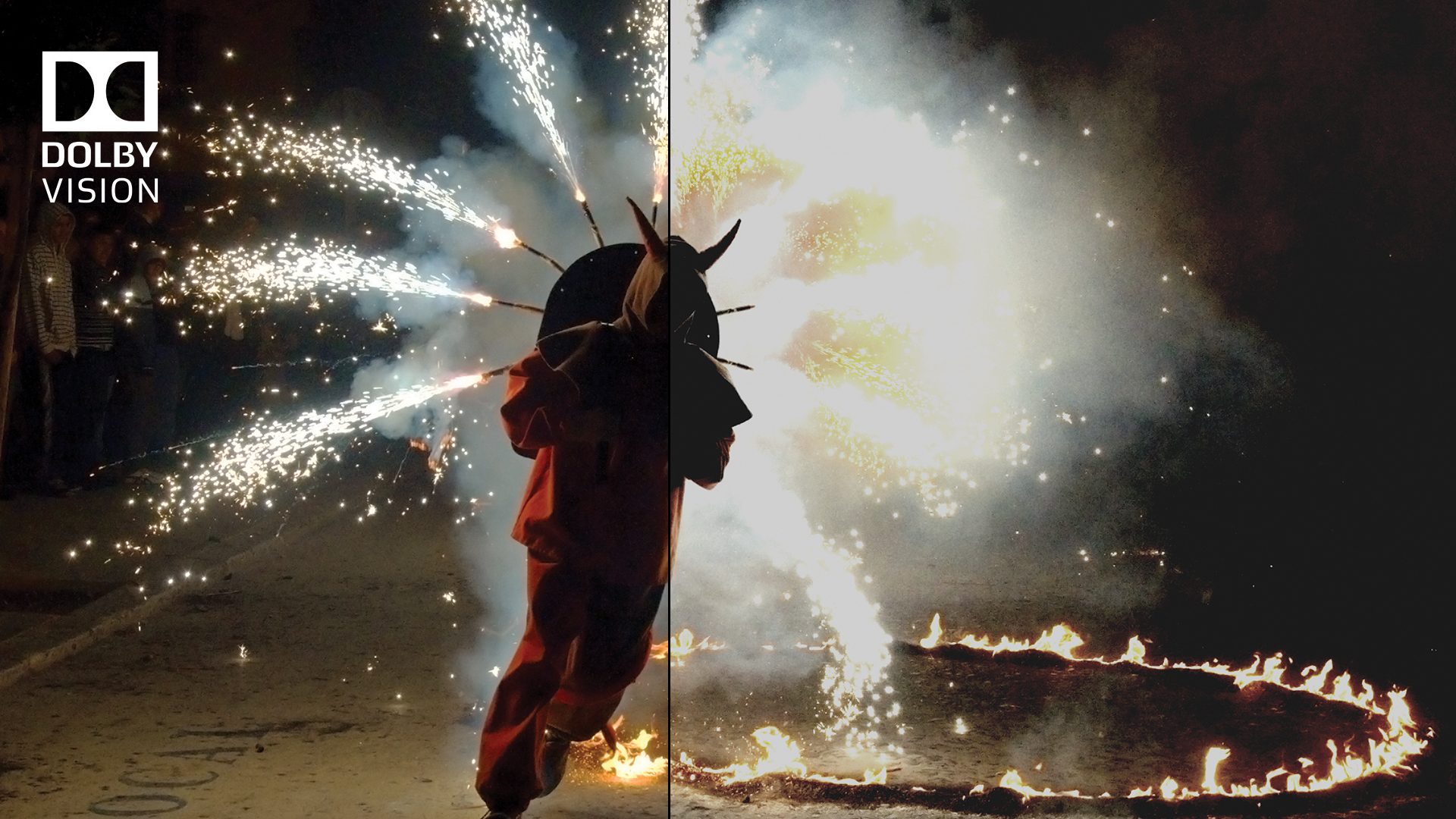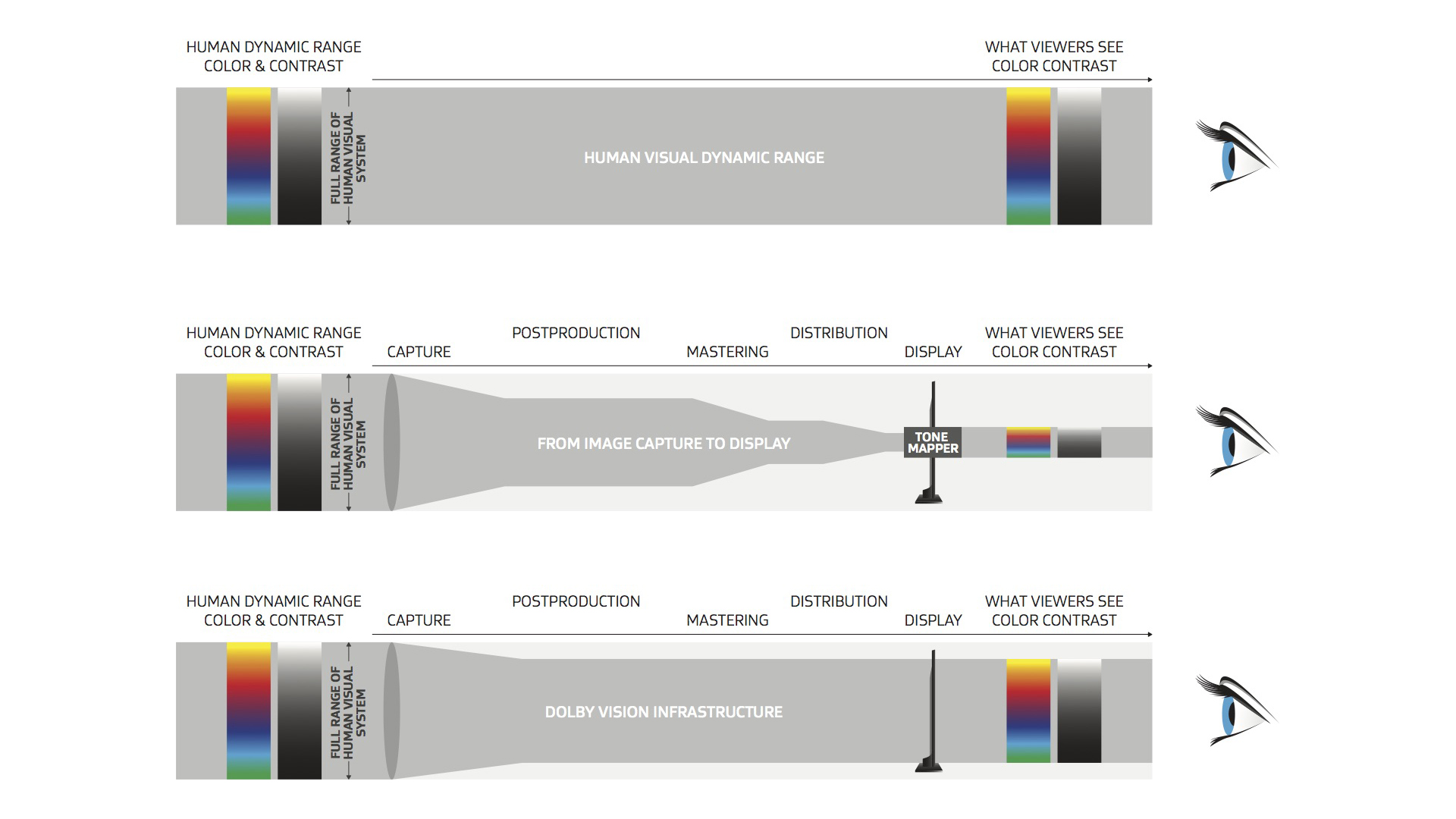

Microsoft has just launched support for Dolby Vision HDR gaming on Xbox Series X and Xbox Series S, with support in over 100 games. And "thousands" of other games that are available in HDR will be enhanced with automatic Dolby Vision enhancement by the console itself.
This is exciting, because Dolby Vision isn't some high-end spec that only people who've spent masses on one of the very best TVs will benefit from. It often feels like it's sold that way – as the 'ultimate' HDR version – but actually the major advantage of Dolby Vision is that it's better for affordable TVs. Well, and also some high-end ones, but we'll get to that.
What it means is that this is a visual upgrade that lots of people can take advantage of with their existing TV, or when buying one of the best TVs under £500 or best TVs under £1000 – which is bit different to 120Hz or VRR, which only work with fairly high-end TVs from the last 18 months or so.
And this is something that only Microsoft is offering, and Sony seems to have no interest in on the PS5, despite supporting Dolby Vision on its TVs. It's the same with Dolby Atmos – Sony wants to stick with its own 3D audio format. In both cases, Microsoft is using an industry standard to deliver a better experience – Sony's reluctance is pretty confusing, and while it won't hold back the PS5 ultimately, it's definitely a reason for those on the fence to consider an Xbox.
- Breaking! PS5 graphics about to get EVEN BETTER as Sony finally drops key update
- 4 things that will make Zelda: Breath of the Wild 2 on Nintendo Switch OLED legendary
- Marvel says Spider-Man 2 on PS5 is "darker" and teases Hulk appearance in Wolverine
So what does Dolby Vision do?
The big advantage to Dolby Vision compared to regular HDR (which is called 'HDR10') for gaming is 'intelligent mapping'.
Intelligent mapping is the really crucial part. In the movie world, films have a 'mastered' version, which is basically the final edited and tweaked version that the director is happy with, which is often based on a maximum HDR brightness of 4,000 nits. But barely any home TVs can reach 4,000 nits, which means that when you're watching in HDR10, your TV is squashing down the full range of brightness to fit into whatever range its pixels can manage.
What often happens is that you end up with an image where some parts are brighter than it should be, losing details in the highlights, while also causing dark areas to become more grey than black.
Sign up to the T3 newsletter for smarter living straight to your inbox
Get all the latest news, reviews, deals and buying guides on gorgeous tech, home and active products from the T3 experts
The image at the top of the piece is an illustration of this from Dolby – the idea being that the bright areas can't be handled smartly so all muddle together, while anything in the dark background is lost as a grey smear. And here's a handy diagram from Dolby to explain further! Actually, I think this diagram over simplifies it, but it shows the basic concept of the dynamic range being compressed too far.

The advantage of Dolby Vision TVs is that there's a chip inside that understands how bright and colourful that display is, and so is able to fit the film's full range of brightness into what that TV can handle, while also knowing what the Dolby Vision data tells it the movie should look like. So you get a picture that's more like what the director saw, but on an affordable display. You get more accurate dark tones, and detail comes back into the bright areas.
Why is this better for cheaper TVs? Because these sets have less bright panels, meaning they're more prone to struggling with getting the HDR balance right. Brighter high-end TVs (including the best Samsung TVs) can get away with not using Dolby Vision, because they're bright enough to avoid noticeable brightness compression.
Dolby Vision helps more limited TVs do an accurate job within their limitations, so you get the best from them. That's the idea, at least.
Think of it like this: you pack a suitcase for a trip, and you pack everything you could possibly need. When you get to the airport, you discover that it's too heavy, and you'll need to leave some stuff behind. With HDR10, it's like the airport security guy is the one who chooses what to ditch, who doesn't fully understand what you've packed and why, and leaves stuff you'd rather have kept. Dolby Vision is like if you get to choose what you leave behind, so what you end up with is balanced to your needs.
But that was all about movies (and, er, luggage) – what about games? Well, the same principle applies. Games aren't 'mastered' in the same way, but the same issue exists: they're capable of pushing out a huge contrast range, and they don't know what your TV can handle. So in Halo 5, if you're standing in a spot with both bright light and dark shadow, the game can create dazzling sun and deep dark tones. When this reaches your TV, bap mapping might cause something moving in the shadow to be hard to see, or cool graphical effects in the sky to be lost.
But if the game's HDR is mapped with Dolby Vision, then you won't have that issue. It'll map to whatever your TV is capable of, keeping as much clarity in the colours and dynamic range as possible.
Which TVs have Dolby Vision?
Loads of them! And going back several years – to around 2016, though it certainly wasn't widespread then. You'll need to check the specs for your model if you don't know – and bear in mind that for many slightly older TVs, only one or two of the HDMI ports may support Dolby Vision, so you'll need to check that too.
I've mentioned here that Dolby Vision is great for more budget TVs, but because it involves careful implementation, it hasn't actually been available on them until more recently. But that's changed a lot.
There are affordable models from globals companies such as LG, TCL and Hisense that include it. In the UK, TVs from brands including Philips and Panasonic are available too.
Check out our review of the Hisense A7500F for a prime example of a cheap Dolby Vision option.
In mid-range or high-end TVs, Dolby Vision is now the standard for HDR from every company except Samsung (sadly, because it makes such great TVs for gaming outside of this). You'll it in so many of the best gaming TVs, including the Sony X90J and LG C1.
A great step forward
Changing to Dolby Vision doesn't give the kind of immediate visual 'wow' that the jump to 4K did, or the first HDR games. Whereas those things added dazzle, what Dolby Vision does is add nuance. But despite what being on any kind of social media might have you believe, nuance is vital.
It's exactly what you want in games that are striving for more and more realistic graphics – what's the point in stunning ray-traced lighting if your TV mangles it?
And in competitive games, it's an advantage too – it's easier to see someone sneaking up on you if the shadows are properly handled.
Matt is T3's former AV and Smart Home Editor (UK), master of all things audiovisual, overseeing our TV, speakers and headphones coverage. He also covered smart home products and large appliances, as well as our toys and games articles. He's can explain both what Dolby Vision IQ is and why the Lego you're building doesn't fit together the way the instructions say, so is truly invaluable. Matt has worked for tech publications for over 10 years, in print and online, including running T3's print magazine and launching its most recent redesign. He's also contributed to a huge number of tech and gaming titles over the years. Say hello if you see him roaming the halls at CES, IFA or Toy Fair. Matt now works for our sister title TechRadar.
-
 Leaked AirPods prototype looks like Nothing... literally
Leaked AirPods prototype looks like Nothing... literallyAnd we are here for them
By Britta O'Boyle Published
-
 OnePlus Watch 3 lands in the UK with a flurry of freebies and a huge discount
OnePlus Watch 3 lands in the UK with a flurry of freebies and a huge discountThe new titanium-clad smartwatch brings 120-hour battery life, ECG health checks, and some serious launch offers
By Matt Kollat Published